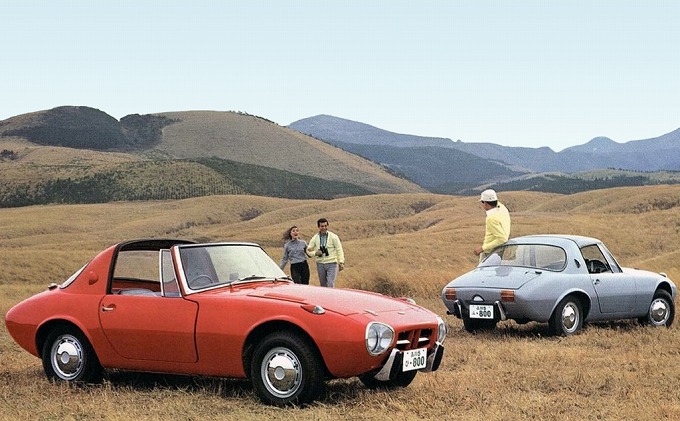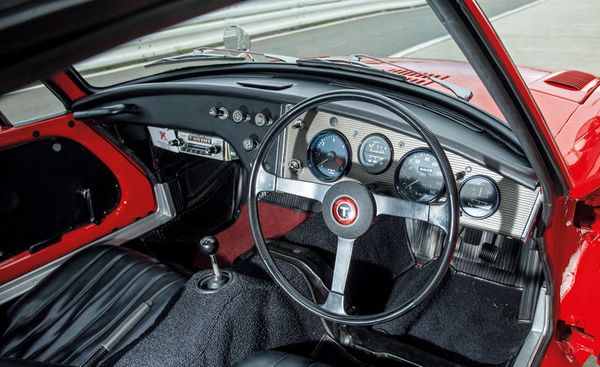
The first sportscar produced by Toyota was the Sports 800. It was initially called Publica Sports, because it shared the chassis and engine of the regular Publica, and introduced under this name on the Tokyo Motor Show of 1962. Initially the project was experimental purposes only but after the enthusiasm of the motorshow, it was decided to start selling the car. However, for the mass production model, the name was changed to Sports 800 referring to the engine size of 0.8 liter which is 800 cc.
Although the Sports 800 was based on Publica, Toyota did effort on improving many parts. The engine for example, had a larger displacement and featured two carburators, giving it a peak power of 45 horsepower. Due to its low drag coefficient, the Sports 800 could reach up to 155 km/h. A double wishbone suspension was used at the front and rear had leaf springs.

Toyota put a lot of effort in making the vehicle as aerodynamic as possible. A good example are the covers that are in front of the headlamps. The thrive to reduce the air resistance resulted in a vehicle with very curvy shapes. Another focus point was to make the vehicle as light as possible which resulted in a final vehicle weight of only 580 kilogram. The vehicle was also equipped with a removable aluminium roof panel which could be stored in the boot when it was taken off.

Sales started in March 1965 and with the vehicle being priced around 600,000 yen, it was just a bit more expensive than the Honda S600. its competitor. Throughout its lifecycle, the Sports 800 did not see major changes or updates. In 1967 the gearbox changed from a non-synchro to a synchro first gear. A year later there was a grille and bumper change, and in the final year of production, 1969, side markers were added.
In total 3131 units have been sold, with 1235 units in 1965, 703 units in 1966, 538 units in 1967, 440 units in 1968 and 215 units in 1969. Around 300 units have been produced for the Okinawa market as this was occupied by America and people drove on the other side of the road at that time.
